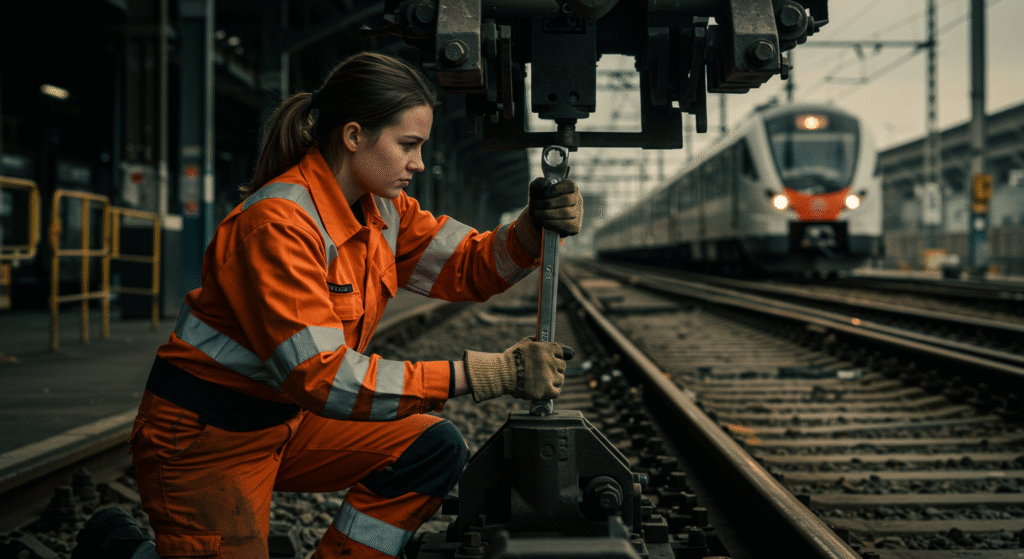
What Does a Railway Engineer Do?
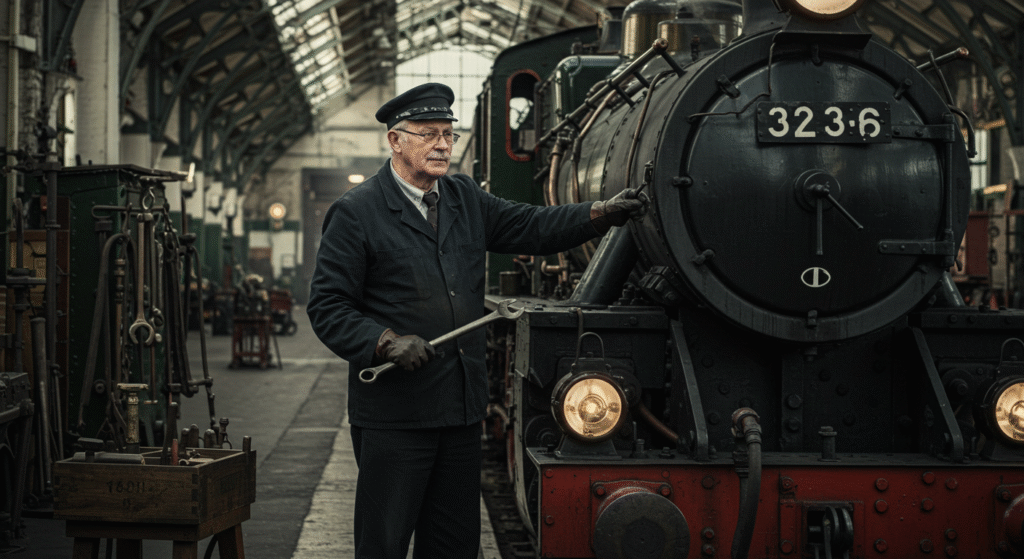
Table of Contents
- Introduction
- 1.1. Overview of Railway Engineering
- 1.2. Importance of Railway Engineers
- Education and Training
- 2.1. Educational Requirements
- 2.2. Specializations Within Railway Engineering
- 2.3. Certifications and Professional Development
- Roles and Responsibilities
- 3.1. Designing Railway Infrastructure
- 3.2. Developing Railway Systems
- 3.3. Maintaining and Upgrading Existing Infrastructure
- 3.4. Ensuring Safety and Compliance
- Types of Railway Engineers
- 4.1. Civil Railway Engineers
- 4.2. Mechanical Railway Engineers
- 4.3. Electrical Railway Engineers
- 4.4. Signaling and Telecommunications Engineers
- Work Environment
- 5.1. Office-Based Tasks
- 5.2. On-Site Responsibilities
- 5.3. Collaboration and Teamwork
- Challenges in Railway Engineering
- 6.1. Ensuring Safety
- 6.2. Managing Large-Scale Projects
- 6.3. Adapting to Technological Advancements
- Future Trends and Innovations
- 7.1. High-Speed Rail
- 7.2. Automation and Digitalization
- 7.3. Sustainable and Green Railway Solutions
- Career Path and Opportunities
- 8.1. Entry-Level Positions
- 8.2. Advancement Opportunities
- 8.3. Salary Expectations
- 8.4. Global Job Market
- Conclusion
- 9.1. Summary of Roles and Responsibilities
- 9.2. Final Thoughts on Pursuing a Career in Railway Engineering
1. Introduction
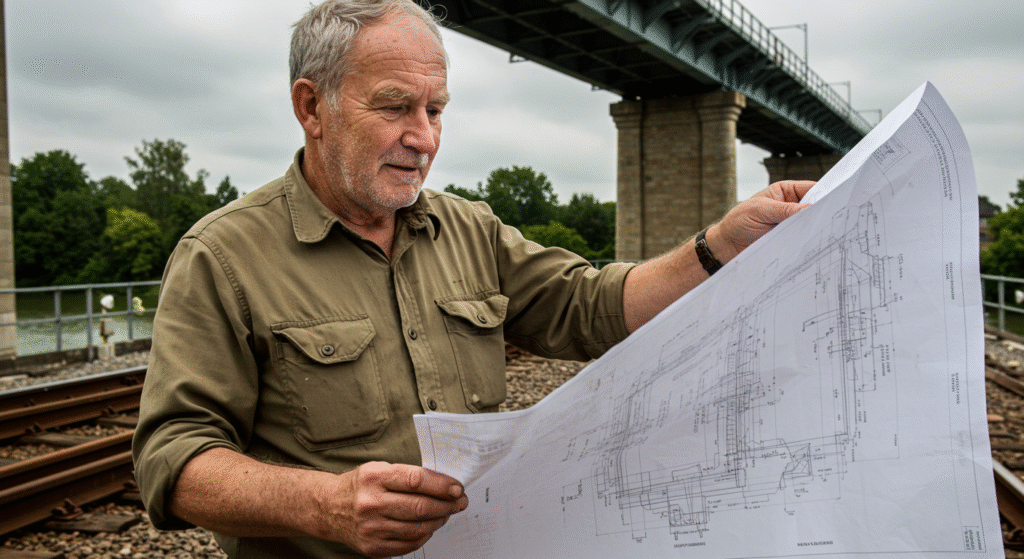
1.1. Overview of Railway Engineering
Railway engineering is a specialized field within engineering that focuses on the design, construction, maintenance, and operation of railway systems. It encompasses a wide range of activities, from designing tracks and signals to developing locomotives and managing railway infrastructure. Railway engineers play a crucial role in ensuring the safety, efficiency, and reliability of railway networks, which are vital for transporting people and goods.
1.2. Importance of Railway Engineers
Railway engineers are essential for the development and maintenance of railway systems. They are responsible for designing and implementing solutions to complex engineering challenges, ensuring that railways operate safely and efficiently. Their work directly impacts public safety, economic growth, and environmental sustainability, making their role indispensable in modern society.
2. Education and Training
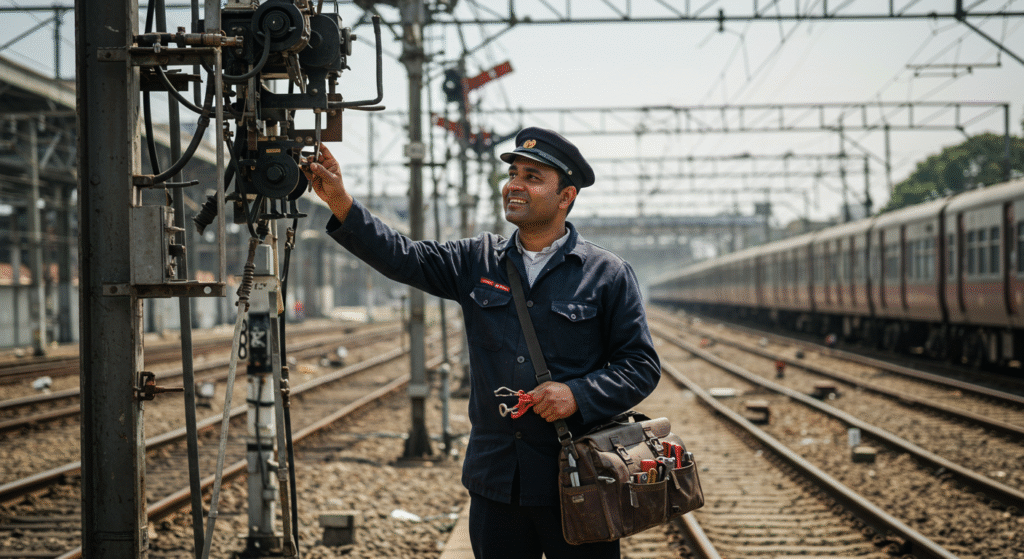
2.1. Educational Requirements
To become a railway engineer, one typically needs a bachelor’s degree in engineering. Relevant fields include civil engineering, mechanical engineering, electrical engineering, or a specialized degree in railway engineering. Coursework usually covers mathematics, physics, and engineering principles, with specific focus areas depending on the type of railway engineering.
2.2. Specializations Within Railway Engineering
Railway engineering offers various specializations, allowing engineers to focus on specific aspects of the field. These include:
- Civil Railway Engineering: Focuses on the design and construction of railway infrastructure, such as tracks, bridges, and tunnels.
- Mechanical Railway Engineering: Involves the design and maintenance of locomotives and rolling stock.
- Electrical Railway Engineering: Deals with the electrical systems, including power supply and signaling.
- Signaling and Telecommunications Engineering: Specializes in the systems that control train movements and ensure safe operations.
2.3. Certifications and Professional Development
Professional certifications can enhance a railway engineer’s career prospects. Certifications may include Professional Engineer (PE) licenses or specialized certifications in railway engineering. Continuous professional development is crucial, as railway engineers must stay updated with the latest technologies and industry standards.
3. Roles and Responsibilities
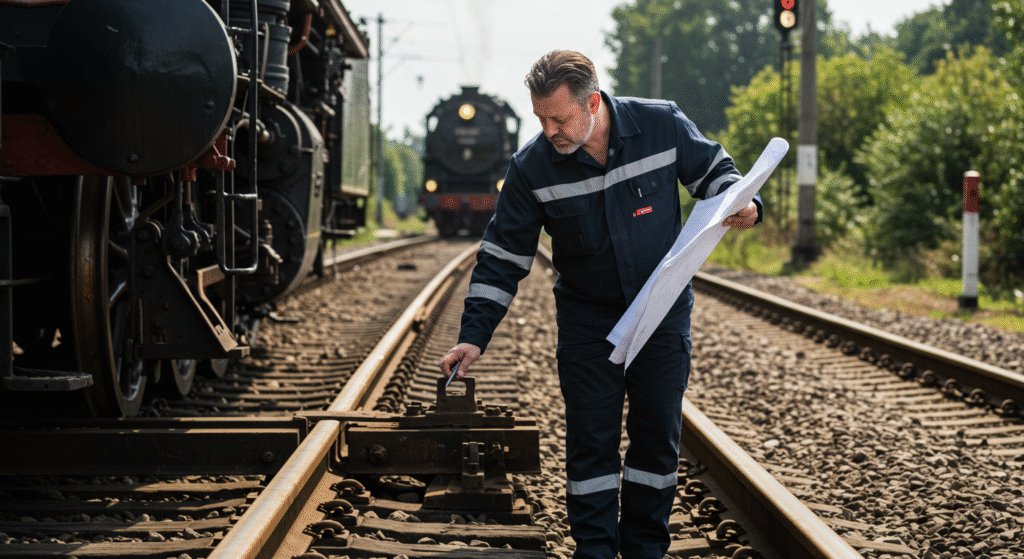
3.1. Designing Railway Infrastructure
Railway engineers are responsible for designing railway infrastructure, including tracks, stations, and depots. They ensure that designs are safe, efficient, and meet regulatory standards. This involves using advanced software and modeling tools to simulate and test designs before implementation.
3.2. Developing Railway Systems
Engineers work on the development of railway systems, including locomotives, wagons, and control systems. They collaborate with manufacturers and other stakeholders to ensure that systems are reliable and meet operational requirements.
3.3. Maintaining and Upgrading Existing Infrastructure
Maintenance is a critical aspect of railway engineering. Engineers inspect and assess existing infrastructure to identify needs for repair or upgrade. They develop maintenance schedules and oversee work to ensure minimal disruption to railway operations.
3.4. Ensuring Safety and Compliance
Safety is paramount in railway engineering. Engineers must ensure that all designs and systems comply with safety regulations and industry standards. They conduct risk assessments and implement safety measures to prevent accidents and ensure reliable operations.
4. Types of Railway Engineers
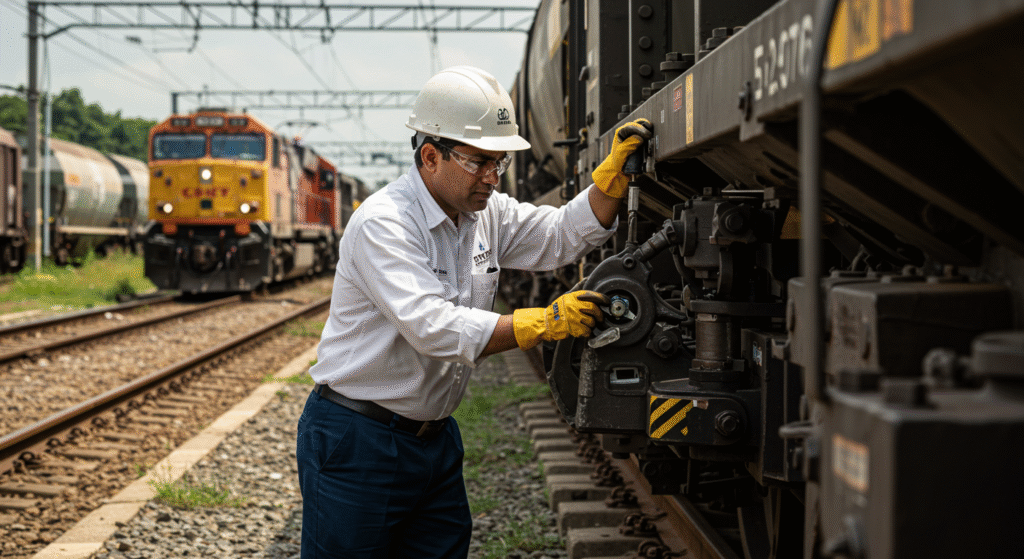
4.1. Civil Railway Engineers
Civil railway engineers focus on the structural aspects of railways. They design and manage the construction of tracks, bridges, tunnels, and stations. Their work ensures that infrastructure can support the weight and stress of trains and passenger traffic.
4.2. Mechanical Railway Engineers
Mechanical engineers in the railway sector work on the design, development, and maintenance of locomotives and rolling stock. They ensure that mechanical systems are efficient, reliable, and safe for operation.
4.3. Electrical Railway Engineers
Electrical railway engineers are responsible for the electrical systems that power trains and railway operations. This includes designing and maintaining power supply systems, signaling systems, and communication networks.
4.4. Signaling and Telecommunications Engineers
These engineers specialize in the signaling and telecommunications systems that control train movements. They design and implement systems to ensure safe and efficient train operations, including automated signaling and real-time communication networks.
5. Work Environment
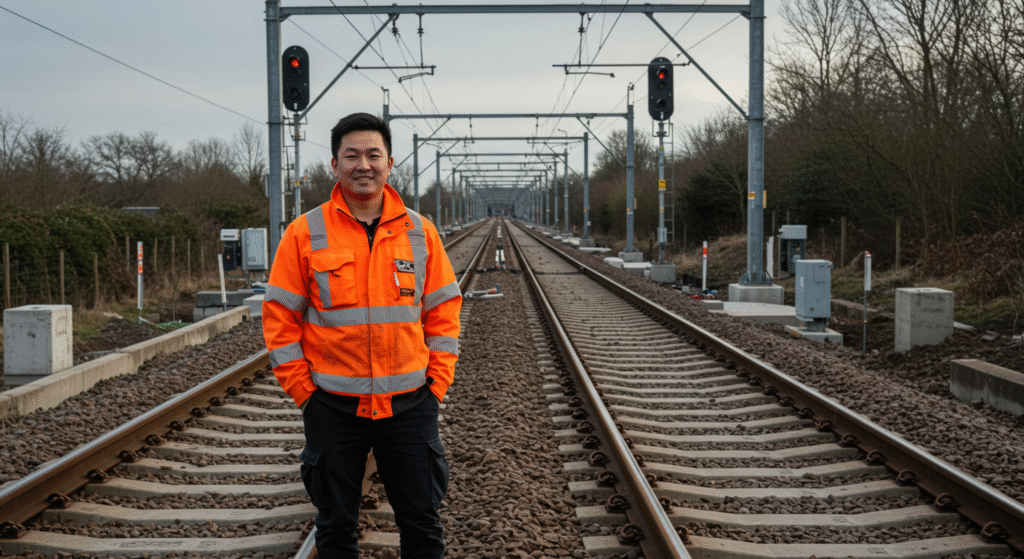
5.1. Office-Based Tasks
Much of a railway engineer’s work is done in an office setting, where they design systems, analyze data, and plan projects. They use computer-aided design (CAD) software and other tools to develop and simulate railway systems.
5.2. On-Site Responsibilities
Engineers also spend time on-site, overseeing construction and maintenance activities. They work alongside contractors and other professionals to ensure that projects are completed to the required standards and specifications.
5.3. Collaboration and Teamwork
Railway engineering is a collaborative field. Engineers work with architects, contractors, government officials, and other stakeholders to ensure that projects are well-coordinated and meet all necessary requirements.
6. Challenges in Railway Engineering
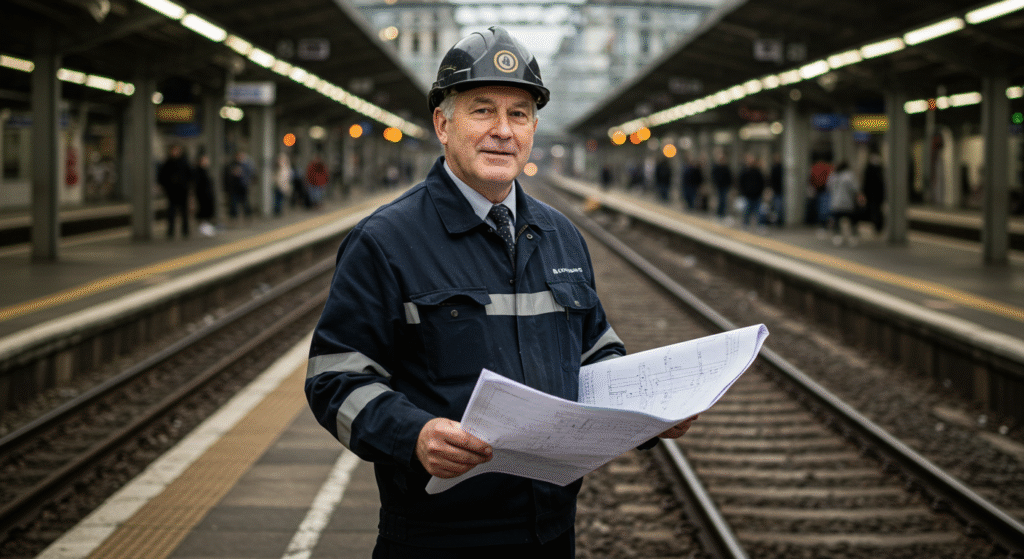
6.1. Ensuring Safety
One of the biggest challenges is ensuring the safety of passengers and crew. Railway engineers must design systems and maintain infrastructure to prevent accidents and ensure reliable operations.
6.2. Managing Large-Scale Projects
Railway projects are often large-scale and complex, requiring careful planning and management. Engineers must manage timelines, budgets, and resources effectively to deliver projects successfully.
6.3. Adapting to Technological Advancements
The railway industry is continuously evolving with new technologies. Engineers must stay updated with the latest advancements and integrate them into their work to improve efficiency and safety.
7. Future Trends and Innovations
7.1. High-Speed Rail
High-speed rail is a growing trend, with many countries investing in faster and more efficient railway systems. Railway engineers are at the forefront of designing and developing these high-speed networks.
7.2. Automation and Digitalization
Automation and digitalization are transforming the railway industry. Engineers are developing automated signaling systems, driverless trains, and advanced monitoring systems to enhance operational efficiency.
7.3. Sustainable and Green Railway Solutions
There is an increasing focus on sustainability in railway engineering. Engineers are working on developing eco-friendly technologies, such as electric and hybrid trains, to reduce environmental impact.
8. Career Path and Opportunities
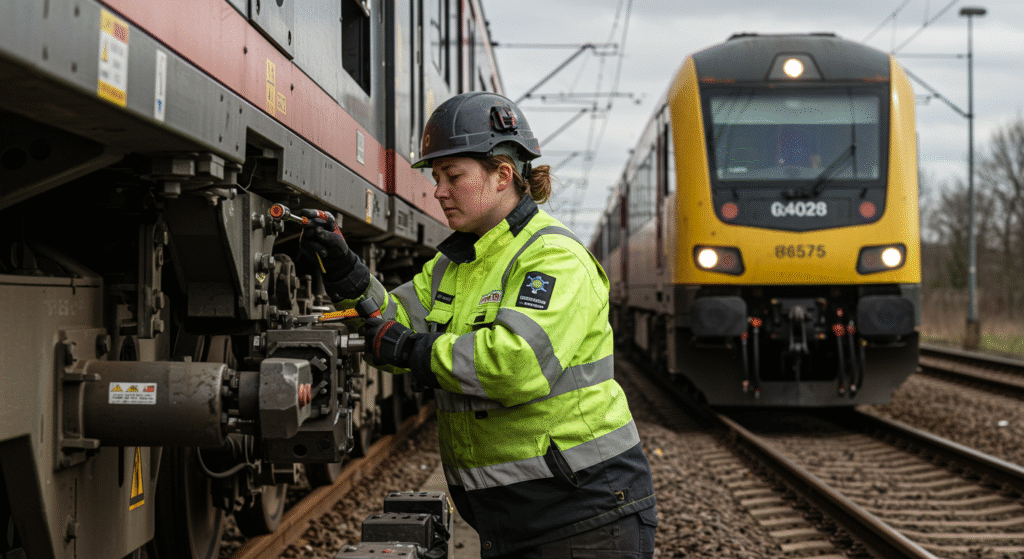
8.1. Entry-Level Positions
Entry-level positions for railway engineers typically involve assisting senior engineers in design, analysis, and project management. These roles provide valuable hands-on experience and a foundation for career advancement.
8.2. Advancement Opportunities
With experience, railway engineers can move into senior roles, such as project manager or lead engineer. They may also specialize further in a particular area of railway engineering or move into executive positions within engineering firms.
8.3. Salary Expectations
Salaries for railway engineers vary based on experience, location, and specialization. Generally, railway engineers are well-compensated, with median salaries ranging from $60,000 to over $100,000 depending on the role and level of experience.
8.4. Global Job Market
The demand for skilled railway engineers is global, with opportunities in both developed and developing countries. Engineers may find work in private engineering firms, government agencies, or international organizations involved in railway projects.
9. Conclusion
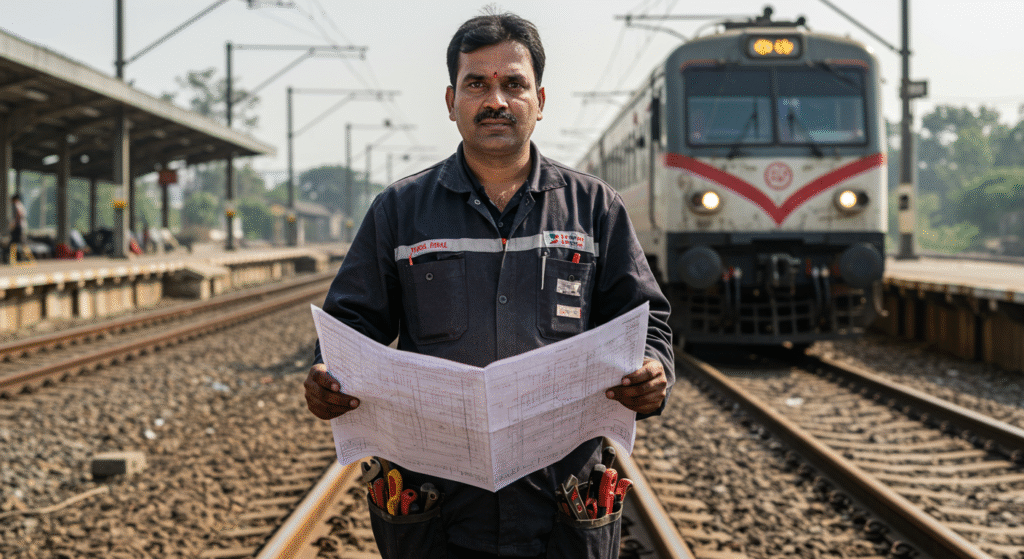
9.1. Summary of Roles and Responsibilities
Railway engineers play a vital role in the design, construction, and maintenance of railway systems. Their responsibilities include designing infrastructure, developing railway systems, maintaining existing infrastructure, and ensuring safety and compliance. The field offers a range of specializations, allowing engineers to focus on areas that align with their interests and skills.
9.2. Final Thoughts on Pursuing a Career in Railway Engineering
For individuals passionate about engineering and interested in the railway industry, a career as a railway engineer can be both rewarding and challenging. It offers opportunities to work on large-scale projects, contribute to technological advancements, and make a significant impact on transportation and society. Prospective railway engineers should pursue relevant educational qualifications, seek out professional certifications, and stay committed to continuous learning and professional development. With dedication and hard work, a career in railway engineering can be highly fulfilling and offer numerous opportunities for growth and innovation.
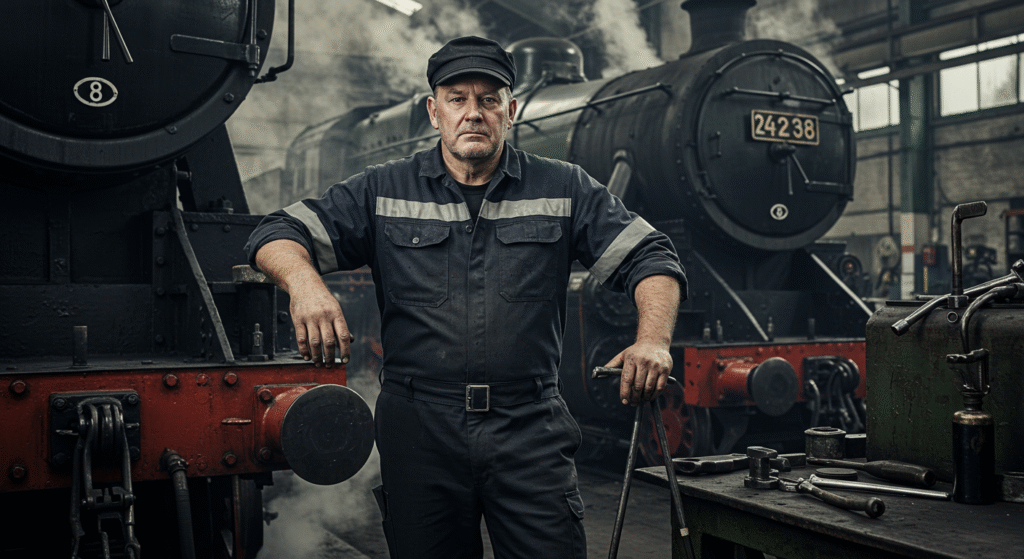
- https://worldcivilsociety.com/which-engineering-has-the-least-math/
- https://worldcivilsociety.com/what-is-the-most-difficult-field-in-civil-engineering/
Pingback: Civil Engineering Drawings: A Comprehensive Guide
Pingback: Which Engineer Makes the Most Money?
Pingback: The Top 10 Branches of Engineering
Pingback: The Six Major Types of Engineering: A Comprehensive Overview
Pingback: Materials Used in Railway Engineering